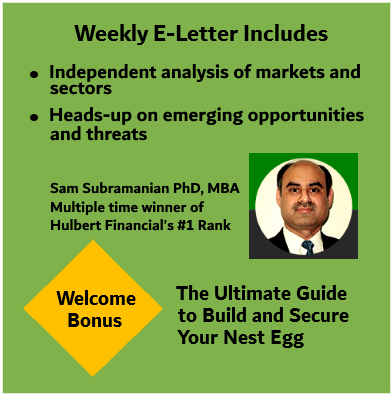Mutual fund titans Vanguard and Fidelity are taking different approaches to compete against sector ETFs.
The allure of low expense ratios, better transparency, and ready liquidity has made exchange-traded funds (ETFs) a popular investment vehicle.
The robust returns earned off-late by energy and other commodity ETFs have resulted in money gravitating towards such ETFs. The Energy Select Sector SPDR (XLE) for example sports about $4.5 billion in assets. According to the Investment Company Institute’s latest report, assets in sector ETFs totaled over $39 billion, up from $26 billion, a year ago. And, these assets do not include the over $8 billion invested in commodity trusts like streetTRACKS Gold Shares (GLD) and iShares COMEX Gold Trust (IAU).
Sector ETFs arrived on the scene in force in 1998 when State Street (STT) launched its series of sector SPDRs. Since then Barclays (BCS), PowerShares, now a part of AMVESCAP (AVZ), and other financial institutions have followed suit introducing sector and industry-group ETFs in growing numbers.
Mutual fund behemoths Vanguard and Fidelity have much at stake as far as sector funds go. With about $26 billion in assets, the actively managed Vanguard Health Care Fund (VGHCX) is in a league of its own. Fidelity Select Energy (FSENX) and Fidelity Select Healthcare (FSPHX) each have well over $2 billion in assets. And the mutual fund titans have not been sitting pat watching sector ETFs encroach.
Vanguard introduced its series of sector ETFs under the VIPER name in 2004. The sector VIPERs are just a class of Vanguard index fund shares that trade on an exchange. By offering this class of shares, Vanguard extended the reach of its sector mutual funds into the world of sector ETFs to directly compete with the latter on their own turf.
Among mutual fund companies, Fidelity by far has the most number of unique industry-group funds. Increasing competition from industry-group ETFs has drawn a response from Fidelity. In contrast to Vanguard, Fidelity is electing to battle sector and industry-group ETFs on its own terms.
Starting October 1, Fidelity will discontinue the practice of pricing its Select Portfolio sector mutual funds on an hourly basis. Like conventional mutual funds, these sector funds will be priced once a day at 4.00 p.m. Eastern Time instead. This in itself further distances the Select Portfolio of sector mutual funds from sector ETFs which are priced throughout the day.
Additionally, restrictions on the number of roundtrip transactions involving Fidelity Select funds will become similar to those of most other Fidelity mutual funds. Such restrictions are intended to discourage frequent trading of Select funds.
In taking the above steps and by not following Vanguard’s lead in introducing a class of shares that trade on the exchange, Fidelity is positioning its 41 Select funds firmly as sector mutual funds and preserving their uniqueness.
Unlike ETFs which offer transparency through indexing, the Select funds are actively managed. Fidelity’s response will allow the firm to continue with the practice of keeping sector fund holdings closely guarded.
Fidelity is betting on the prowess of its global research capabilities to appeal to the interest of long-term investors. By discouraging shareholders from engaging in frequent trading that are oftentimes disruptive to the operations of a mutual fund, Fidelity expects to provide a better milieu for its fund managers to deliver on their stock picking acumen. And if the fund managers can put the new policies to good use and record superior returns, Fidelity’s sector mutual funds can give sector and industry-group ETFs a run for their money.

 Sick buying high & selling low? Fed up of the fees you pay? Tired researching investments? End your financial pain now. You have the opportunity to
Sick buying high & selling low? Fed up of the fees you pay? Tired researching investments? End your financial pain now. You have the opportunity to 

 DEC. 1993 to DEC. 2023
DEC. 1993 to DEC. 2023





